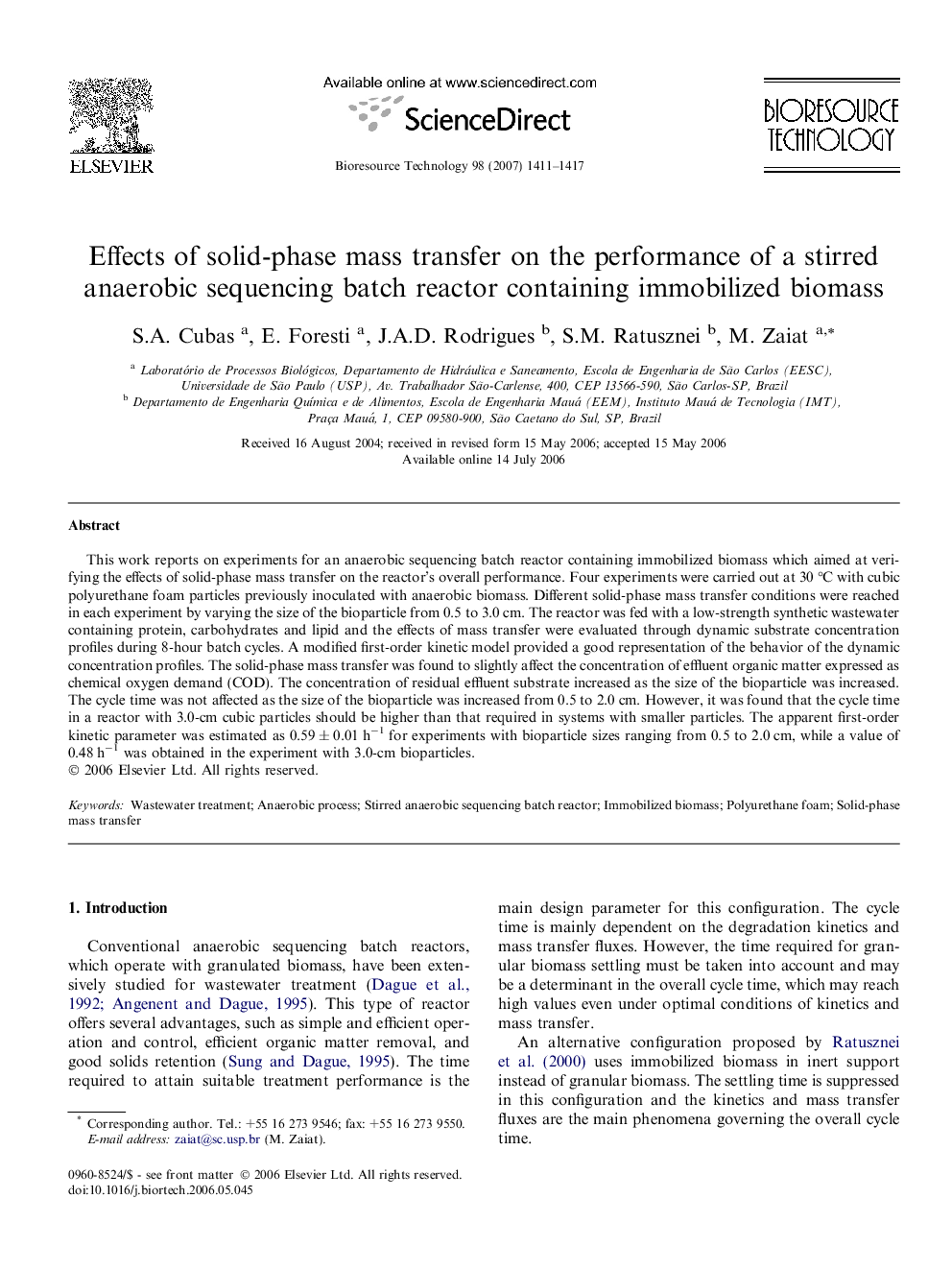| Article ID | Journal | Published Year | Pages | File Type |
|---|---|---|---|---|
| 686554 | Bioresource Technology | 2007 | 7 Pages |
This work reports on experiments for an anaerobic sequencing batch reactor containing immobilized biomass which aimed at verifying the effects of solid-phase mass transfer on the reactor’s overall performance. Four experiments were carried out at 30 °C with cubic polyurethane foam particles previously inoculated with anaerobic biomass. Different solid-phase mass transfer conditions were reached in each experiment by varying the size of the bioparticle from 0.5 to 3.0 cm. The reactor was fed with a low-strength synthetic wastewater containing protein, carbohydrates and lipid and the effects of mass transfer were evaluated through dynamic substrate concentration profiles during 8-hour batch cycles. A modified first-order kinetic model provided a good representation of the behavior of the dynamic concentration profiles. The solid-phase mass transfer was found to slightly affect the concentration of effluent organic matter expressed as chemical oxygen demand (COD). The concentration of residual effluent substrate increased as the size of the bioparticle was increased. The cycle time was not affected as the size of the bioparticle was increased from 0.5 to 2.0 cm. However, it was found that the cycle time in a reactor with 3.0-cm cubic particles should be higher than that required in systems with smaller particles. The apparent first-order kinetic parameter was estimated as 0.59 ± 0.01 h−1 for experiments with bioparticle sizes ranging from 0.5 to 2.0 cm, while a value of 0.48 h−1 was obtained in the experiment with 3.0-cm bioparticles.
